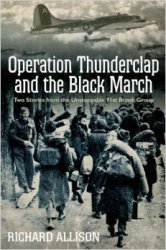I begin this book with a backward glance. Growing up in Philadelphia and having seen my fair share of historical reenactments (especially at the Bicentennial Celebration), I never questioned colonial garb. When I started in archaeology, the very first item I excavated was an artifact of personal adornment (a common copper-alloy shoe buckle) from the Rittenhouse-Town site in Fairmount Park, Philadelphia. Perhaps my interest in the archaeology of colonial clothing and adornment started there, leading me on a certain trajectory that led me to write a book on the subject.
But truthfully, my sincere interest in the subject of dress, clothing, and adornment began when looking at the artifacts from Presidio Los Adaes, the subject of my doctoral dissertation. I was fascinated with the buttons, buckles, and other small finds recovered from the site and knew that those artifacts could lead me toward an understanding of constructions of identity in the colonial period. But archaeological writings on clothing and adornment related to constructions of colonial identity were few and far between at the time, as most sources about small finds dealt with identifying and categorizing recovered objects rather than with interpreting them. Through my work on this collection, I grew to know the colonial world as much more richly and deeply textured than I had previously realized, populated by peoples in various dress. And I soon found inspiration and validation in the work of Mary Beaudry, Kent Lightfoot, Kathleen Deagan, Joan Comaroff, Martin Hall, and Ann Stoler: scholars who tackle issues of pluralism, identity, and bodily dress and comportment.
Now, years later, I am grateful to be among a cohort of archaeologists who, like myself, seek to understand how and why colonial peoples dressed in the ways that they did. So, when I was asked to write a short volume on colonial clothing and adornment through the lens of historical archaeology, I was eager to add my voice to the chorus and write a bit more on the subject. Many thanks are given to Michael Nassaney for allowing me to pursue this topic that occupies much of my thoughts (both academic and otherwise) in a volume for his excellent series.
The Peabody Museum of Archaeology and Ethnology at Harvard University is home to one of the largest and oldest collections of material culture in the Western Hemisphere and has provided me with many sources of inspiration. More importantly, I derive excellent support from my colleagues there, especially William Fash, Lisa Barbash, Julie Brown, Trish Capone, Amy Cay, Catherine Ceseaux, Jessica Ganong, Sandra Dong, Viva Fisher, Susan Haskell, Christina Hodge, Steven Leblanc, Castle McLaughlin, David Schafer, and Rubie Watson. Jessica Ganong helped me organize the images for the book and was patient with me throughout the process. Ying to my curatorial yang, Trish Capone is also my guide on NAGPRA work at the museum. I am in awe of her leadership, thoughtfulness, and graciousness in this important work as well as so many other matters. I am also in sincere debt to Christina Hodge, whose opinion, wit, and sage advice have helped me throughout this process and in our collaborative work at the museum. Susan Haskell is a wealth of knowledge about the museum collections and I am thankful that she shares her knowledge with me. Sandra Dong brought the Tlingit coat featured in Chapter 4 to the attention of the museum as part of her ongoing research. She also provided identification of the Chinese coins, and I thank her for allowing me to include that information here. Viva Fisher, co-author and dear friend, shared the Edith Wharton quote used in Chapter 6.
William Fash, Trish Capone, Christina Hodge, Dylan Clark, Molly Fi-erer-Donaldson, Emily Pierce, and Michele Koons are my collaborators on the Harvard Yard Archaeology Project (HYAP). As always, I am thankful of their partnership and support on this program and for their insight, knowledge, and humor about many other things academic, museum, and otherwise. I have also benefited from the diligent research by undergraduate and graduate students on the project, especially Nathaniel Amdur-Clark, Danielle Charlap, Sakura Christmas, Trevor Johnson, Rachel Sayet, and Sally Stephens. HYAP’s work on the seventeenth-century Harvard Indian College and my own work on the colonial body and dress have benefited from discussions with many members of the Harvard University Native
American Program, including Carmen Lopez, Jackie Old Coyote, Jonella Larson, Desiree Martinez, Judy Kertz, Troy Monserrat-Gonzales, and Sharri Clark, as well as the members of Native Americans at Harvard College, especially Caitlin Young and Maggie Spivey.
My research on the archaeology of clothing and adornment has been enhanced by the museum’s work with many Native groups that honor us with their presence and kindly share with us their knowledge. I extend my gratitude to all of these visitors and especially to Rose Berens and Vern Adams from the Bois Forte Band of Chippewa Indians, who helped me to see glass beads, quite literally, in a new light.
I am thankful to be part of an academic community where there are many fine scholars and colleagues whose own work on clothing and adornment consistently inspires me: Mary Beaudry, Kathleen Deagan, Viva Fisher, Rosemary Joyce, Rob Mann, Lynn Meskell, Ruth Phillips, Nan Rothschild, Pat Rubertone, Ann Stahl, Carolyn White, and Barb Voss are among them and I am grateful for their scholarship, comments, and insights. My writings on the colonial period continue to be inspired by my conversations with some truly outstanding scholars, including Lisa Brooks, Charlie Cobb, Amy Groleau, Siobhan Hart, Kent Lightfoot, Melinda Maynor Lowery, Tim Pauketat, Steve Silliman, and Giovanna Vitelli. Michael Nassaney and two anonymous reviewers provided valuable critiques to this manuscript. I thank John Byram, Marthe Walters, and Kate Babbitt of the University Press of Florida for their help and patience while shepherding me through the process of writing this book.
In recent years, I had the opportunity to teach two courses related to my interests. In Spring 2006, I taught a course on the ancient body at Brown University. Discussions with students in that course inspired many of the topics I discuss in this volume. In Fall 2007, I taught a graduate seminar on materiality and museum practice at the University of Massachusetts, Boston. Many thanks to the students in that class who challenged my ideas and brought their own to the table each week, and many thanks to Steve Silliman and Steve Mrozowski for the opportunity to teach the class.
It is interesting to look back to my life as a teenager and to see my life then expressed in my writings today. During my early teen years, I was employed at a funky retail clothing store in a suburb of Philadelphia. There I worked with an indescribable group of women who taught me all about fashion in just a few short years and made an indelible impression on my style. My mother was one of my co-workers at that job. For as long as I can remember, my mother has taught me about fashion. I have no greater teacher about clothing and adornment than the woman who has always inspired me to dress my best.
Finally, I get unfailing support, laughter, and joy from my beautiful family: my amazing husband and our fantastic little Lily. Lewis has supported me from art school into graduate school and then onto Cambridge. He is a never-ending source of gut-ripping laughter. It is his ink that inspired the inclusion of tattooing in Chapter 3. And he inspires me in so many other ways. Thank you, Lewis, for everything.
D. D. L.




 World History
World History









